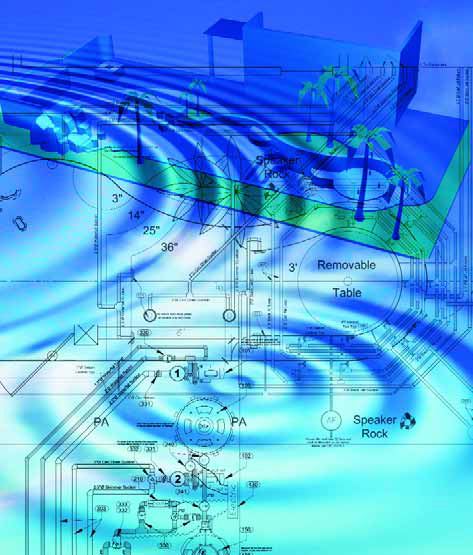Professional Watershaping
One of the fascinating things about working with the different types of clients we encounter as watershapers is that we can never really know what to expect. If my years of experience have taught me anything, it's that perception is often very different from reality. Instead, what I find is that the basic assumptions we might be inclined to make about different "categories" of clients are, often as not, completely confounded by the uniqueness of every situation. As a result, working effectively across a range of project types and client economic levels means being able to withhold judgment or at the very least avoid
One of the fascinating things about working with the different types of clients we encounter as watershapers is that we can never really know what to expect. If my years of experience have taught me anything, it's that perception is often very different from reality. Instead, what I find is that the basic assumptions we might be inclined to make about different "categories" of clients are, often as not, completely confounded by the uniqueness of every situation. As a result, working effectively across a range of project types and client economic levels means being able to withhold judgment or at the very least avoid
It's true for any subject that it's basically impossible to teach and learn about a topic unless there's a shared set of terms that everyone understands and can agree about what they mean. I've thought about that fact a lot in developing a course for university students about watershaping, or what I'm most often calling "water architecture" these days. With watershaping as a subject, that sounds simple enough. After all, we all know the meaning of "swimming pool," "fountain" and "pond." Or do we? I'm not so sure anymore. When I started breaking down our vocabulary for classroom use, I quickly recognized that the meanings of the words we use are anything but clear. Indeed, the more I dug into this seemingly simple phase of curriculum development, the murkier things became.The difficulty I ran into was this: Once I moved past the most rudimentary sets of terms and definitions and looked closely at the language we use to describe what we produce, it became painfully obvious to me that
It's true for any subject that it's basically impossible to teach and learn about a topic unless there's a shared set of terms that everyone understands and can agree about what they mean. I've thought about that fact a lot in developing a course for university students about watershaping, or what I'm most often calling "water architecture" these days. With watershaping as a subject, that sounds simple enough. After all, we all know the meaning of "swimming pool," "fountain" and "pond." Or do we? I'm not so sure anymore. When I started breaking down our vocabulary for classroom use, I quickly recognized that the meanings of the words we use are anything but clear. Indeed, the more I dug into this seemingly simple phase of curriculum development, the murkier things became.The difficulty I ran into was this: Once I moved past the most rudimentary sets of terms and definitions and looked closely at the language we use to describe what we produce, it became painfully obvious to me that
In the last several of these "Details," I've covered what happens in my projects before construction begins. Now we're ready to shift gears and look at what happens on site - the place where design and execution meet. Before we look at the way I build things, however, I want to take a hard look at common practices in the field. What I write here may seem harsh, but it's not intended that way: To establish a baseline for doing things in what I would term the right way, I need to point to practices in our industry - particularly the pool/spa sector - that
In the last several of these "Details," I've covered what happens in my projects before construction begins. Now we're ready to shift gears and look at what happens on site - the place where design and execution meet. Before we look at the way I build things, however, I want to take a hard look at common practices in the field. What I write here may seem harsh, but it's not intended that way: To establish a baseline for doing things in what I would term the right way, I need to point to practices in our industry - particularly the pool/spa sector - that
We knew it had to happen. After several years of superheated growth, some sectors of the watershaping market are now slowing down - in some areas, dramatically so. In my travels and through dozens of conversations with watershapers and their suppliers during the past several months, I've been hearing consistently that the volume-oriented, price-driven end of the market has been hit particularly hard - off somewhere between 30 and 60 percent in some areas. That's a big number no matter which end of the spectrum is closer to the truth. It represents an enormous change from the extreme demand that most all of us were experiencing just a year ago. So now, a great many firms that were
We knew it had to happen. After several years of superheated growth, some sectors of the watershaping market are now slowing down - in some areas, dramatically so. In my travels and through dozens of conversations with watershapers and their suppliers during the past several months, I've been hearing consistently that the volume-oriented, price-driven end of the market has been hit particularly hard - off somewhere between 30 and 60 percent in some areas. That's a big number no matter which end of the spectrum is closer to the truth. It represents an enormous change from the extreme demand that most all of us were experiencing just a year ago. So now, a great many firms that were
Custom watershapers need to understand materials. That's not a new message by any means, but the fact of the matter is that many of the watershapers I encounter have yet to fully embrace the vast range of material options available in today's marketplace. The reason for that is, I think, quite simple: Locating new materials and amassing a library of unique offerings for clients can be a full-time job unto itself. All too often, this makes it easier to rely on familiar sources and options instead of doing the work of finding new ones. I know from personal experience that the work can be


















